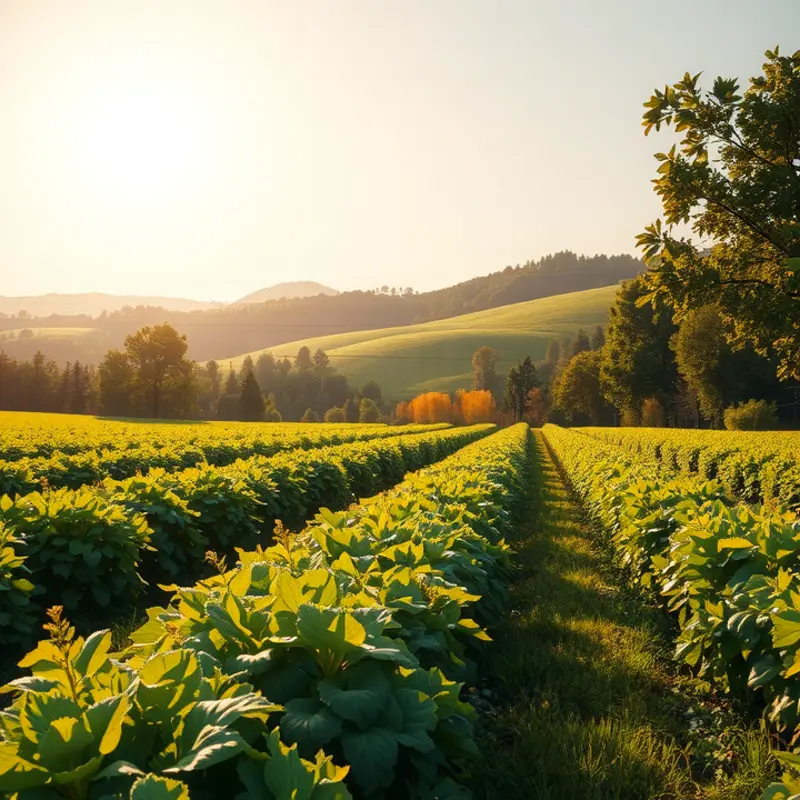Food packaging is a silent contributor to environmental challenges, often going unnoticed in our quest for sustainability. Many environmentally-conscious individuals strive to make eco-friendly food choices, yet they may overlook the significant impact of packaging waste on our planet. Reducing food packaging waste is a manageable yet powerful step toward a greener lifestyle. By understanding the types of packaging and adopting simple strategies, we can minimize waste and encourage better environmental practices throughout our communities.
Understanding Food Packaging: Types and Impact

Food packaging plays a crucial role in preserving the quality, safety, and shelf life of products. However, understanding the environmental impact of different packaging types can guide us toward more sustainable choices. Food packaging comes in various materials, each with its advantages and ecological drawbacks.
Plastic packaging is prevalent due to its low cost, versatility, and light weight. It is used for everything from bottles and bags to containers and wraps. Unfortunately, plastic is one of the least sustainable materials. It is derived from petroleum, is slow to degrade, and often ends up in landfills or oceans, contributing to pollution. Efforts to recycle plastic have had limited success, with a significant portion still failing to be repurposed effectively.
Glass packaging offers an eco-friendlier option. It’s reusable, non-toxic, and preserves flavors without leaching chemicals. Glass is highly recyclable, and when recycled, it can reduce energy consumption by up to 95%. The main downside is its weight and fragility, leading to higher transportation emissions and the risk of breakage.
Metal packaging, primarily in the form of cans and foil, is robust and ideal for preserving perishable foods. Metals like aluminum are infinitely recyclable, conserving 95% of the energy required to produce new aluminum. However, the extraction processes involved in mining metals are energy-intensive and environmentally disruptive.
Many manufacturers are turning to paper and cardboard packaging as alternatives. These materials are often biodegradable and sourced from renewable resources. They are ideal for dry goods and provide an excellent surface for labeling. Unfortunately, paper production involves deforestation and high water usage, although responsible sourcing from sustainable forests and innovations in recycling can mitigate some of these impacts.
Increasingly, we see biodegradable and compostable packaging gaining ground. Made from materials like cornstarch or sugarcane, these can decompose naturally, reducing landfill burden. Yet, their effectiveness depends on proper composting facilities, which are not universally available.
Understanding the lifecycle of these materials, from production to disposal, is essential in appreciating their environmental impact. Each type presents unique challenges and opportunities for sustainable development. As consumers, we hold the power to reduce packaging waste by selecting products that use eco-friendly designs and sustainable materials.
To complement these efforts, considering safe storage solutions can further help in minimizing waste. For insights into sustainable food storage, explore eco-smart kitchen storage solutions. By being informed and deliberate in our choices, we can significantly reduce our environmental footprint and promote a more sustainable food system.
Practical Steps to Reduce Packaging Waste

Reducing food packaging waste begins with mindful shopping choices. Selecting bulk items is an excellent first step. Bulk purchasing minimizes packaging by using fewer containers overall, allowing you to buy just the amount you need, reducing waste and cost. Many stores offer a variety of products in bulk bins, enabling you to refill reusable containers you bring from home.
To maximize the effectiveness of bulk buying, it’s crucial to have a variety of reusable containers on hand. Glass jars, metal tins, and cloth bags are great options. They offer durability and are free from potentially harmful chemicals found in some plastics. Cloth bags are particularly useful for dry goods like grains, nuts, and dried fruits.
At the grocery store, prioritize produce sections that offer unpackaged fruits and vegetables. These items can be placed in reusable produce bags or directly into your shopping cart. By avoiding pre-packaged produce, you not only reduce packaging waste but often enjoy fresher, seasonal ingredients.
Online grocery shopping can also contribute to reducing waste. Many services now offer the option of receiving goods in minimal or recyclable packaging. When using these services, specifically request low-waste packaging where possible. Additionally, supporting local farmers’ markets can be a rewarding way to reduce packaging waste. Most markets encourage customers to bring their own bags for produce and other goods.
For packaged goods that are still necessary, such as certain snacks or frozen foods, choosing options that feature recyclable or compostable packaging can make a significant difference. Research the materials and opt for products using responsibly sourced packaging materials.
In the kitchen, aim to reduce waste through smarter storage. Airtight containers help keep food fresh for longer, reducing spoilage and food waste. In addition, implementing a meal plan helps to forecast the exact quantity of food needed, minimizing the risk of surplus produce that might otherwise go to waste.
Embracing these strategies requires a mindset shift, viewing packaging as something to minimize. Each step, from selecting bulk items to committing to reusable containers, plays a part in reducing our environmental footprint. While it’s tempting to see convenience as the primary factor, these small changes demonstrate that sustainability and practicality can go hand in hand.
Final words
Minimizing food packaging waste is essential for anyone committed to sustainable living. By becoming mindful of the types of packaging we encounter and the waste they generate, we can reclaim a healthier, greener environment. Emphasizing practical steps such as choosing bulk items, shopping with reusable bags, and opting for eco-friendly brands can make a vast difference. Each action counts, and together we can foster a culture of sustainability that inspires others to join the movement. Remember, small changes lead to significant impacts. Let’s continue to cultivate a sustainable future by reducing food packaging waste.








